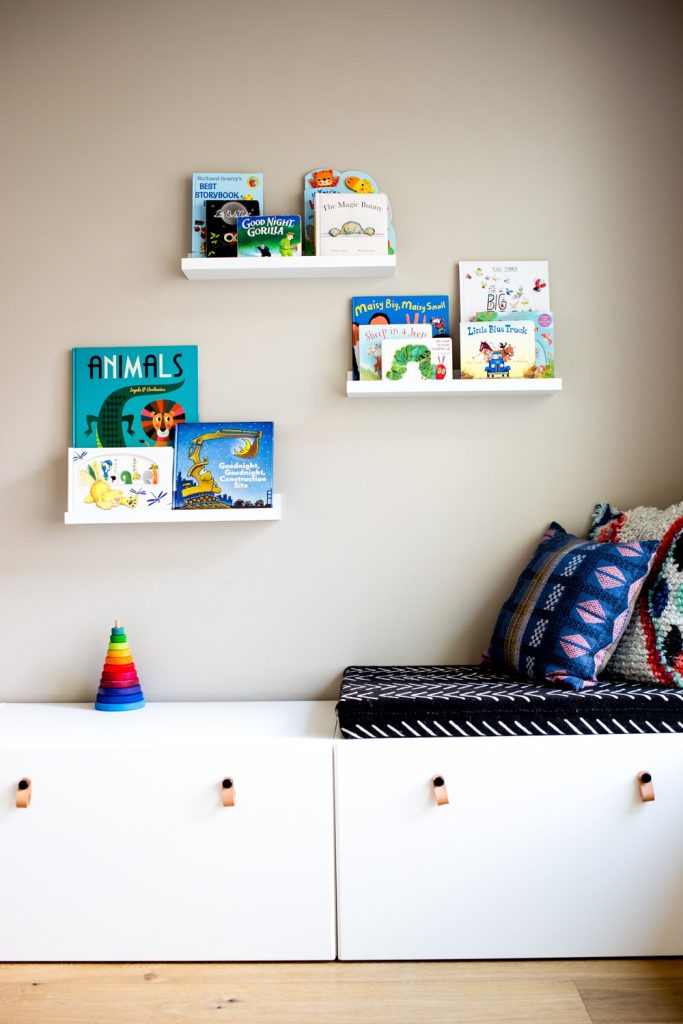Detach in the Family: Strategies to Involve Everyone in the Journey of Minimalism

Embrace Minimalism Together
In the quest for a simpler life, minimalism often takes a backseat in family dynamics. Many individuals desire to declutter their lives and surroundings, but engaging all family members in this journey can be challenging. The key to a successful transition lies in teamwork and shared experiences. The allure of minimalism isn’t just in having fewer belongings but in creating a space that fosters clarity, peace, and connection for families.
Integrating minimalism into family life can transform daily routines and promote stronger relationships. Here are some effective strategies to bring everyone on board:
- Open Communication: Facilitate discussions about what minimalism means to each family member. This could involve sharing the emotional load of clutter and how it affects everyone’s mental well-being. For example, a child may express feeling overwhelmed by toys, while an adult might find too many commitments draining.
- Set Shared Goals: Collaboratively brainstorm what minimalism looks like for your family. Perhaps this includes eliminating 20% of possessions or designating one night per week for family activities devoid of distractions. Setting shared goals helps everyone feel invested in the outcome.
- Involve Everyone: Encourage participation in decluttering and organization processes. Assign age-appropriate tasks to children, such as sorting toys or deciding which clothes no longer fit. This hands-on approach instills a sense of responsibility and ownership in the decluttering process.
Practicing minimalism as a family not only promotes harmony but also teaches essential life skills such as decision-making and organization. As you embark on this journey, consider implementing:
- Family Meetings: Schedule regular check-ins to discuss progress and challenges. Use these meetings not just for updates but to bond over successes, such as successfully reorganizing a room or overcoming the urge to buy unnecessary items.
- Celebrating Milestones: Recognize and reward accomplishments, no matter how small. This could mean treating your family to a fun outing or a special meal when you complete a decluttering project. Acknowledgement fosters motivation and enthusiasm.
- Learning Together: Share books or documentaries about minimalism to spark interest. Consider watching “Tidying Up with Marie Kondo” together as a family. Engaging with educational resources collectively not only ignites curiosity but also provides topics for discussion, making the philosophy behind minimalism more tangible.
By fostering a shared vision, families can bond over the experience of decluttering. Engaging in these activities can lead to lasting changes, such as reduced stress levels, improved family communication, and a greater appreciation for what truly matters. Explore how to involve everyone in this meaningful journey towards a more intentional life, making the transition to minimalism not just an individual task, but a collective adventure. Embracing minimalism together can ultimately lay a foundation for a more fulfilling family life, allowing you all to enjoy experiences over possessions.
DIVE DEEPER: Click here to discover more

Building a Strong Foundation for Minimalism
To truly embrace minimalism as a family, it is essential to establish a strong foundation built upon shared values and mutual respect. The first step towards achieving this unity is to create a sense of community among family members, where everyone feels valued and heard regarding the journey towards a simpler lifestyle.
It is common for families to have differing opinions on the concept of minimalism. Some might see it as a beneficial simplification, while others might perceive it as a threat to their cherished belongings. Therefore, fostering a culture of open dialogue is crucial. This can be initiated through family discussions that allow each member to voice their thoughts and feelings about the clutter they face. When children articulate their struggles with overflowing toy bins or adults discuss their burdens from excessive commitments, it emphasizes the impact clutter has on everyone’s mental health and well-being.
Once a foundation of open communication is established, families can start setting actionable objectives that reflect their collective aspirations. Goal-setting should feel like a fun project rather than a chore. Utilize creative brainstorming sessions to encourage everyone to contribute their ideas. Ask questions such as, “What would our home feel like if we had less stuff?” or “How would we like to spend our weekends if not buried under clutter?” These discussions can yield shared goals, affirming a commitment to embracing minimalism together.
Strategies for Family Involvement
Engaging each member in the decluttering efforts not only empowers them but fosters a sense of ownership over the family’s journey towards minimalism. Here are a few strategies to help include everyone:
- Designate a Decluttering Day: Set aside a specific day when the whole family comes together to tackle different areas of the house. Each member can choose their focus point, whether it’s a bedroom, basement, or garage. This helps maintain enthusiasm as they can see immediate results from combined efforts.
- Craft a ‘Keep, Donate, Trash’ System: Involve everyone in categorizing items during decluttering. Having three clearly labeled boxes helps children understand the decision-making process and learn about giving back to the community through donations, while also recognizing when to let go of items deemed unnecessary.
- Share Responsibilities: Assign tasks based on individual strengths. For example, older children may manage the sorting process, while younger ones can assist in tidying up or playing with simpler toys. Tailoring responsibilities to suit family capabilities helps nurture teamwork and builds skills.
Engaging in these methods promotes a family culture rooted in intention and purpose. As everyone actively participates in minimizing possessions, the principles of minimalism begin to take shape not just in spaces, but in the essence of family relationships. A shared commitment to supporting each other in this evolving journey can pave the way for a more satisfying lifestyle, emphasizing quality experiences and cherished moments over material accumulation.
| Advantage | Description |
|---|---|
| Increased Family Bonding | Engaging in minimalism collectively fosters open communication and teamwork. |
| Enhanced Quality of Life | By decluttering, family members can focus on experiences rather than material possessions. |
The journey to minimalism can seem daunting; however, involving every family member transforms the experience into an enriching adventure. One significant advantage is the increased family bonding. As families work together to declutter and determine what is truly essential, they learn to communicate their needs and preferences. This promotes deeper understanding and encourages teamwork, creating a harmonious environment.Moreover, embracing a minimalist lifestyle leads to an enhanced quality of life. By reducing distractions from excessive belongings, families shift their focus toward shared experiences. Engaging in activities like exploring nature, cooking meals together, or playing board games often replaces the time spent managing a disorganized home. This collective shift fosters cherished memories and strengthens connections, paving the way for a lifestyle where less truly becomes more. Getting started might seem overwhelming, but with the right strategies and involvement from all family units, the path to minimalism can prove to be a rewarding journey. Exploring ways to engage each family member will contribute significantly to building a community focused on shared values and initiatives.
DISCOVER MORE: Click here to learn how decluttering can change your life
Fostering Lifelong Minimalist Habits
Involving the entire family in the journey of minimalism not only nurtures collaboration but also establishes an ongoing culture of simplicity. Developing lifelong minimalism habits requires consistency and shared experiences that encourage everyone to reflect on their relationship with possessions. It’s essential to create checkpoints that allow families to assess and recalibrate their progress together.
One effective strategy is to conduct regular minimalism check-ins. These could occur monthly or quarterly, wherein family members gather to discuss their individual experiences with decluttering and the impact on their daily lives. During these sessions, families can evaluate what’s working and what needs adjustment. For instance, perhaps one family member has taken on a new hobby requiring supplies that disrupt the minimalist aesthetic. Open discussions can help determine whether to modify this hobby or find storage solutions that align with minimalism.
Creating Engaging Experiences
Turning the minimalist journey into fun and engaging activities can spark ongoing interest and commitment across all ages. For example, families can establish a ‘30-Day Minimalism Challenge’, where each day, every member selects one item to remove from their belongings. Whether it’s a toy, piece of clothing, or an unused gadget, challenging everyone to pare down their possessions in small increments fosters a sense of accomplishment and collective spirit.
Similarly, families can explore local organizations that accept donations, creating an adventure around giving back. Not only does this teach the value of community and sharing, but it also reinforces minimalism’s principles by helping children understand the positive impact of reducing waste. Taking a family trip to donate items, such as clothing or books, provides a sense of purpose and deep satisfaction, transforming the experience from a mundane chore into a meaningful activity.
Integrating Minimalism in Daily Routines
Embedding minimalism into daily routines solidifies its principles as a family value. Families can create a “Clutter-Free Zone” within the house—a space where no unnecessary items are allowed. This becomes a symbolic area promoting peace and simplicity and reminds family members of their commitment to minimalism. Whether it’s a designated shelf in the living room or a specific section in the garage, having this zone encourages continuous evaluation of possessions in daily life.
Additionally, practice mindful consumption. Encourage family members to ask themselves critical questions before making new purchases: “Do we need this?” or “Does this bring us joy?” Teaching children to be conscious of their buying habits fosters an intrinsic understanding of minimalism from a young age. In a society that constantly promotes consumption, having these discussions cultivates awareness that extends beyond home life, enabling children to make mindful choices in their future.
Family movie nights can also become an avenue for reinforcing minimalism principles. Watching documentaries or films that touch on decluttering, sustainable living, or the environmental impact of consumerism can inspire conversations about the values of minimalism. This integration of entertainment with education engages family members and broadens their perspectives, illustrating how minimalist values resonate in different aspects of life.
As families embark on this journey together, the shared experiences, open dialogue, and collective goals deepen their understanding of minimalism. By integrating strategies that emphasize involvement and engagement, families can cultivate a lasting mindset geared towards simplicity, thus truly manifesting the essence of detaching from unnecessary material possessions.
DISCOVER MORE: Click here to learn about emotional decluttering
Conclusion: Embracing Minimalism Together
As families navigate the rewarding journey of minimalism, the emphasis lies not merely on decluttering physical spaces but rather on fostering a shared mindset that values simplicity and intentional living. By actively involving everyone through engaging strategies such as monthly check-ins and fun challenges like the ‘30-Day Minimalism Challenge’, families can collectively reflect on their possessions and the emotional weight they carry. This shared commitment strengthens familial bonds, promotes collaboration, and teaches valuable life lessons about the essence of letting go.
Moreover, integrating minimalism into daily routines and establishing clear zones free from clutter instills respect for shared spaces. Engaging in meaningful activities, such as donating items together, not only reinforces the importance of community but also cultivates a sense of fulfillment and purpose. It is crucial to assess not just what needs to be removed but also what new habits and mindful practices can replace them.
In essence, the journey of minimalism is a collective adventure that paves the way for a simple yet fulfilling life. By embracing these minimalism strategies, families can cultivate lasting values that extend beyond their homes, impacting future generations. As families grow together in their understanding of minimalism, they learn that true happiness is not found in possessions but in experiences and connections. This transformative journey reminds us that sometimes, less truly is more.


